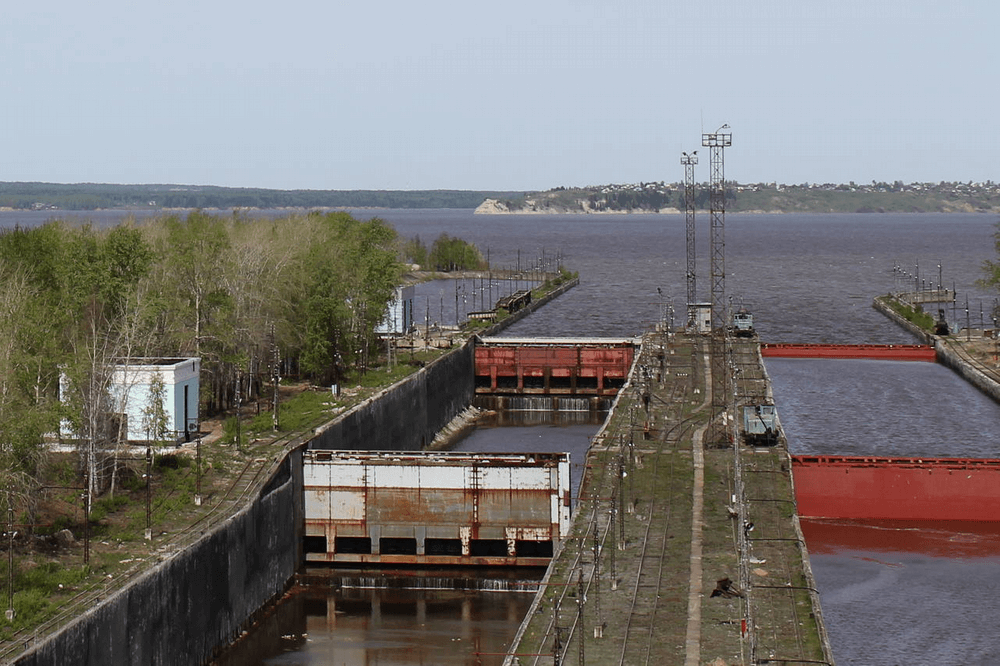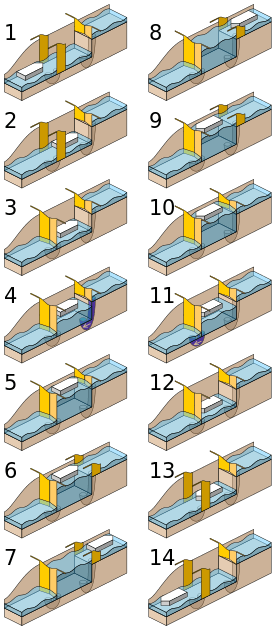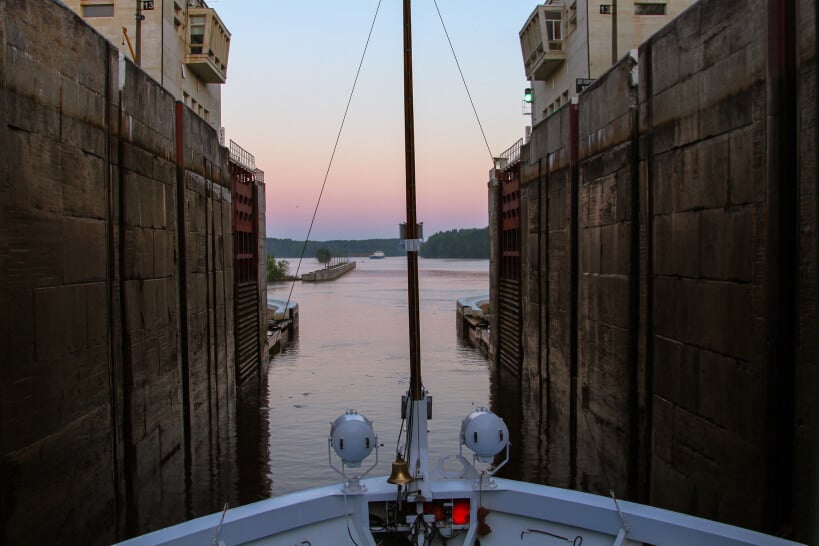- Get link
- X
- Other Apps
- Get link
- X
- Other Apps

The first navigable sluice, in which the leveling of the water level was alternated, was invented by Qiao Weiyue in 984 and erected on the Great Chinese Channel. The gateway was a rectilinear section of a length of 76 meters, which was bounded on both sides by a gate. They were made of wooden beams and moved vertically. The shores of the lock were strengthened, and above it was a canopy. During the 11th century, builders erected sluices along the entire length of the Great Chinese Canal. How does a modern shipping lock work? This is in today's issue!

So, the sluice is a hydraulic engineering structure on navigable and waterways, which ensures the transfer of vessels from one water basin to another with different levels of water in them. On both sides of the gateway is limited by closures or gates, between which is a sealed chamber with adjustable water level. The camera of any gateway has dimensions sufficient to accommodate one or several ships in it. In this case, unlike ship lifts, the lock chamber can not change its position or dimensions. However, the water level in it can vary.

The gates are metal shields located at both ends of the chamber. They serve for the passage and release of vessels and seal the chamber during the passage of ships. In the access channels, safe traffic and parking conditions are provided at the quay walls.
One of the most important in the construction of locks is a water supply device. It is designed for filling and emptying the camera. As a rule, a flat panel shutter is used as such a device. Large pumps can also use special pumps.

The principle of the gateway is as follows: first open the entrance gate, and the vessel goes inside the chamber and moored to the thumbs. Then the entrance gate closes and the bypass valve opens, causing a drop or rise in the water level in the chamber with the ship in it. This is achieved by transfusing or pumping water from an adjacent reservoir in the direction of the vessel. When the water reaches the required level equal to that which is available behind the exit gates of the chamber, the gates open and the vessel exits the airlock.
The process of passing the vessel through the airlock lasts, as a rule, from 10 to 20 minutes, depending on the size of the chamber and the water level difference. When locking, the direction of passage of vessels alternates: after the vessel going downstream has completed the lock, a ship moving in the opposite direction comes into the chamber with already lowered water level. Thus, you do not have to fill up excess or drain the water from the camera.

If it is necessary to overcome a significant pressure or water drop, multi-chamber locks are built. They are several consecutive locks. In this case, the ship alternately moves along the chain of chambers. In China, the five-chamber airlock was built on the world's largest hydro-power complex "Three Gorges". And in the UK on the Avon channel built 16-chamber! Such locks are usually called "stairs".
The article is based on materials .
- Get link
- X
- Other Apps
Comments
Post a Comment